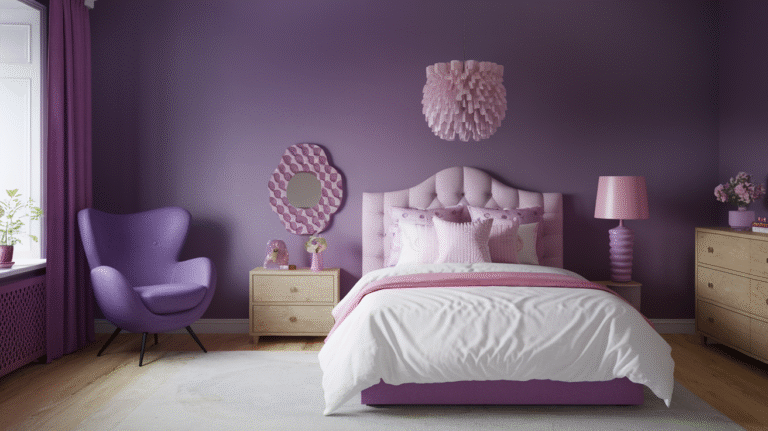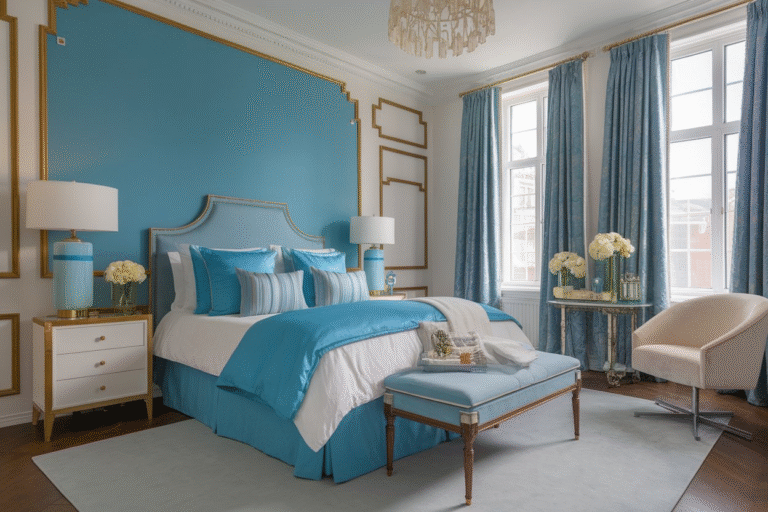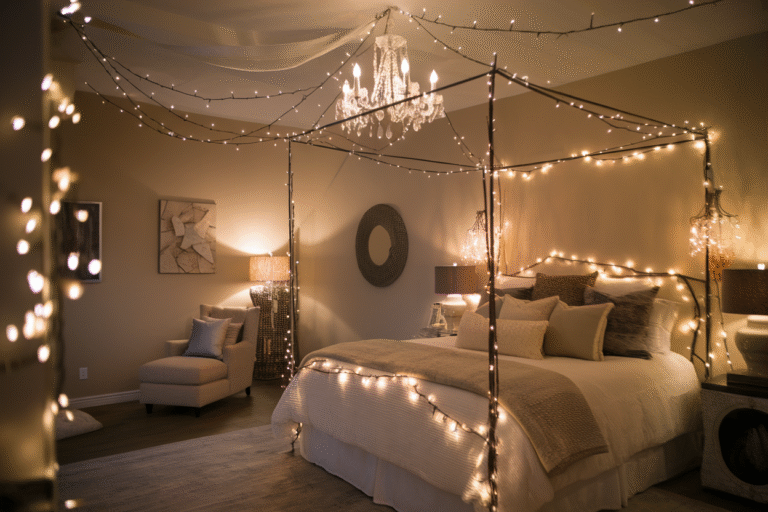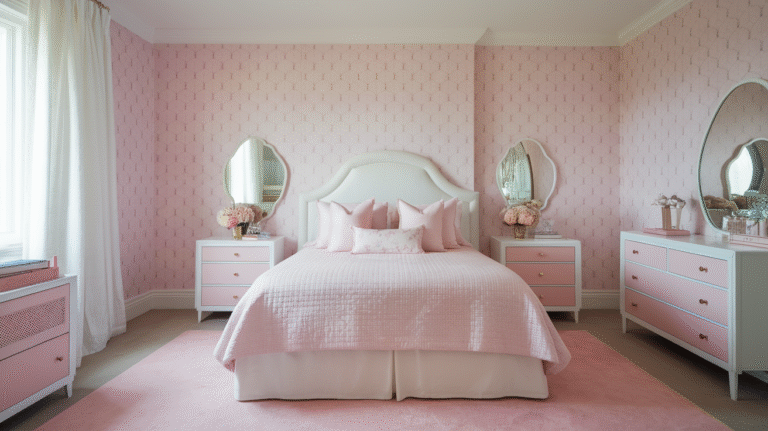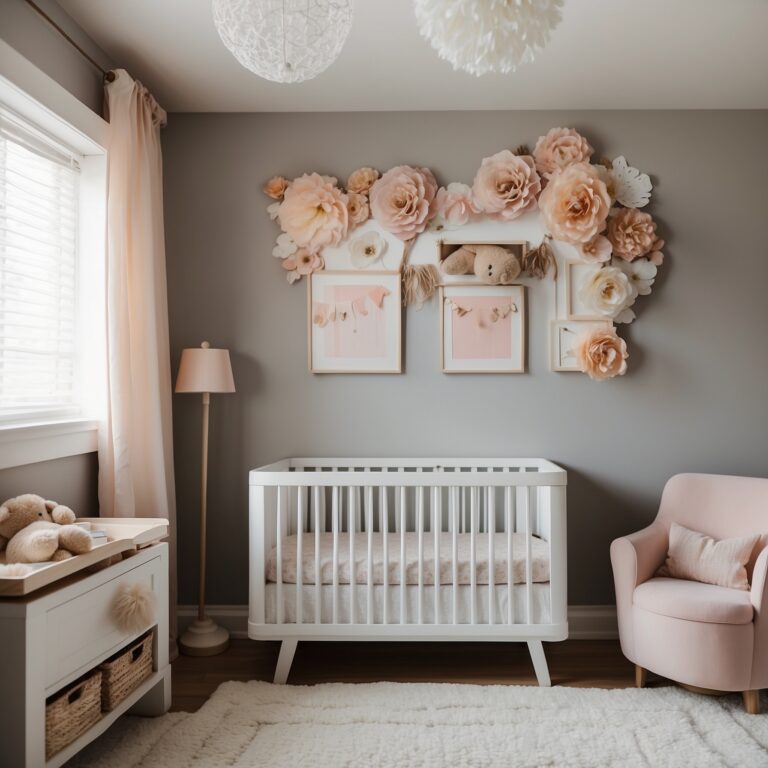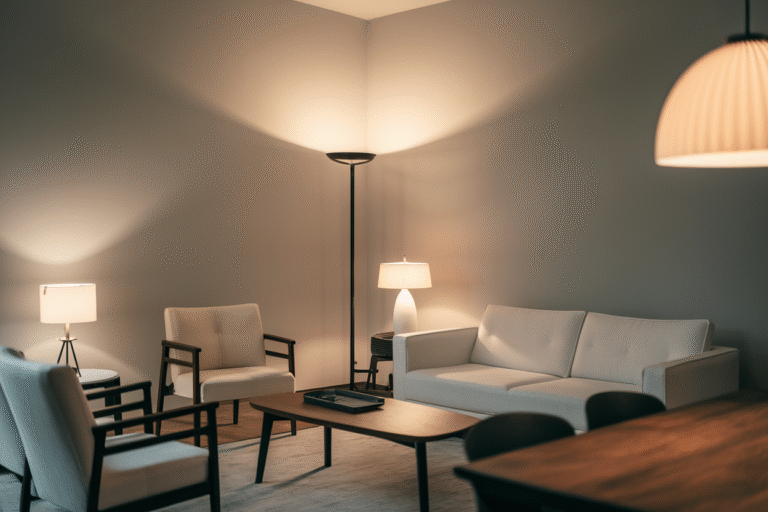25 Small Living Room Layout Ideas: Make the Most of Your Space
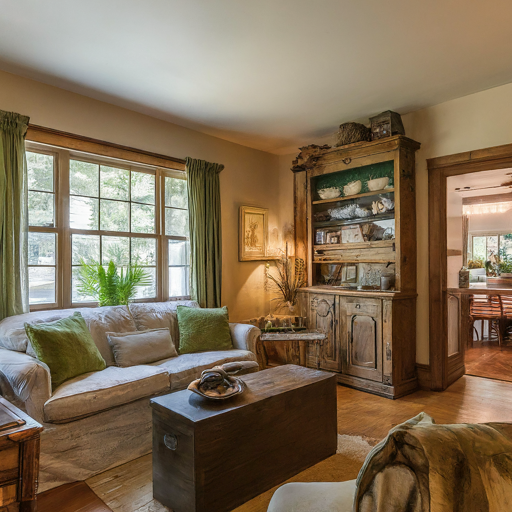
What small living rooms lack in space, they make up for in coziness and warmth. While you may struggle to fit an oversized couch or a large coffee table in your space, there are plenty of ways to design a small living room that feels both functional and fashionable.
The key is to make the most of the space you have. A small living room can be laid out in a variety of ways, so you can make room for all of your favorite elements. Here are 25 of the best small living room layout ideas to help you make the most of your space.
1. Use mirrors and wallpaper

When it comes to small living room design, mirrors are your friend. Not only do they help to bounce light around the room, but they also create the illusion of more space.
In this living room by Interior Fox, the large mirror above the sofa makes the room look longer, and the small square mirrors on the wall create the illusion of a larger space. The wallpapered alcoves also help to draw the eye up and around the room, making it look bigger than it is.
2. Choose furniture with a lightweight appearance

This small living room layout idea is all about the furniture. When you have a small living room, you need to be very selective about the pieces you bring in.
Furniture with a lightweight appearance can help make the room feel less cluttered. This is often called “visual weight.”
For example, a sofa with a higher back and arms can make the room feel smaller, while a sofa with a lower back and exposed legs can make the room feel more spacious.
You can also look for furniture in lighter colors and with more streamlined silhouettes.
3. Add plants to the room

Plants are an easy way to add color and life to any room. They can also be used to fill in empty spaces and create a more inviting atmosphere.
In a small living room, plants can be used to soften the edges of the room and create a more organic feel. You can use them to fill in empty corners or to create a focal point on a side table.
If you don’t have a green thumb, you can always opt for faux plants. There are many high-quality faux plants available that look just like the real thing.
4. Choose the right furniture for your living room

The most important part of any living room, small or large, is the furniture. After all, it’s the furniture that will determine how you use the space.
When it comes to small living room ideas, the right furniture can make all the difference. Here are a few tips to help you choose the perfect pieces for your space:
• Start with a list of the furniture you need. At a minimum, you’ll need a sofa, armchairs, coffee table, and end tables. Make sure to measure your space before you start shopping so you know what will fit.
• Consider the size of your furniture. In a small living room, you’ll want to choose furniture that’s in proportion to the space. A large sectional can overwhelm a small room, while a small sofa can make it feel more spacious.
• Think about how you’ll use the room. If you like to entertain, you’ll need more seating. If you prefer to use your living room as a place to relax and watch TV, you can get away with less seating and more space for a media console.
• Choose furniture that’s the right scale. In a small living room, you’ll want to choose furniture that’s the right scale for the space. That means choosing pieces that are not too large or too small.
5. Use multi-functional furniture

Multi-functional furniture, such as a sofa bed or a coffee table with storage, is a must-have in a small living room. It allows you to get more out of your space without taking up any extra room.
In this small living room layout, a sofa bed is used to create a cozy seating area that can also be used as a guest bedroom. The built-in storage in the coffee table provides a place to stash extra blankets and pillows, and the ottomans can be used as footrests or extra seating.
The key to using multi-functional furniture is to make sure it’s easy to convert and that it’s comfortable to use in its different forms.
6. Create a focal point

Every living room needs a focal point. This is the element that draws the eye and anchors the room. In many living rooms, the focal point is the TV. In others, it might be a fireplace, a large piece of art, or a statement mirror.
If your living room is small, you might not have the space to incorporate a focal point. But, it’s still important to have one. Otherwise, your room will look cluttered and disorganized.
7. Arrange furniture wisely

When it comes to arranging furniture in a small space, the most common approach is to push it back against the walls. However, this can make the room feel more like a waiting room than a cozy living space.
Instead, try arranging your furniture in a way that’s conducive to conversation. That may mean pulling the sofa away from the wall and placing two chairs across from it. Or, you could arrange your furniture in a semi-circle to create a more intimate seating area.
Pro Tip: If you have a small living room and a large rug, try placing the front legs of your furniture on the rug to create a more cohesive look. If you have a smaller rug, place it in the center of your seating area.
8. Use vertical space

If you’re struggling to find enough floor space for your living room furniture, start thinking vertically.
Building shelves or adding wall-mounted storage is a great way to use the vertical space in your living room. And, it can help keep your room looking tidy and organized.
9. Use light colors

Just like with lighting, the color scheme of your room can make it feel bigger or smaller.
Light colors, particularly white, will make a space feel larger.
You don’t have to paint your walls white. You can use a lighter color on the walls and use white as an accent. For example, you can use a white sofa and a white rug to make the room feel larger.
10. Choose furniture with exposed legs

If you want to make your small living room look more spacious, then you need to think about the furniture you are going to use.
One of the easiest ways to make your living room look bigger is to choose furniture with exposed legs. This allows you to see more of the floor, which can make the room feel more open.
11. Use hidden storage
In a small living room, there’s no room for clutter. But, that doesn’t mean you can’t have your favorite things on display.
Instead, make the most of your space by using hidden storage solutions. This includes coffee tables with built-in shelving, sofas that double as beds, and more.
12. Use small rugs
The size of your rug can make a big difference in the look and feel of your living room. A small rug can make a room look and feel smaller, while a larger rug can help to define the space and make it look larger.
In general, your rug should be large enough to fit all of your furniture on top of it. If that’s not possible, you should try to keep at least the front legs of your furniture on the rug.
In this small living room, the rug is just big enough to fit the coffee table and the front legs of the sofa and chair. This helps to define the seating area and make the room feel larger.
13. Use small decorative items
If you have a small living room, you may worry that you won’t be able to fit any decor in without making the space feel cluttered. However, you can still add small decorative items to your space without it feeling overwhelming.
This living room by @thegraycottage uses a few small decorative items to add a pop of color to the space. The small side table, vase, and throw pillows on the couch add visual interest to the room without taking up too much space.
14. Use the walls
In a small living room, you need to take advantage of every inch of space. That includes the walls!
Use wall-mounted shelves to create a display area for your favorite things. Not only does this free up valuable floor space, but it also draws the eye up, making the room feel bigger.
You can also use the walls to create a focal point in your living room. Hang a large piece of art or a gallery wall to make a statement and add visual interest.
15. Use light to your advantage
A small living room doesn’t have to feel cramped. By using light to your advantage, you can make the room feel larger and more open.
In this living room by The Identité Collective, a large mirror reflects light from the windows. The neutral color palette and white walls also help to reflect light around the room.
16. Use the power of repetition
Repetition is a great way to make a small space feel cohesive. It can also help to make the space feel more substantial than it is.
In this living room from Designing Vibes, the designer used repetition to their advantage.
The same color scheme is used throughout the entire room, and the same shapes are repeated in the rug, coffee table, and even the wall decor.
17. Use a neutral color palette
Using a neutral color palette in a small living room design can help to make the space feel larger. This is because the eye isn’t drawn to any one particular area of the room, which can make it feel more open and less cluttered.
In this small living room designed by Emily Henderson, the light gray walls and white ceiling create a seamless look that helps to create the illusion of more space. The white sofa and armchairs also help to keep the focus on the beautiful fireplace and built-in bookshelves.
18. Use a statement piece
A statement piece of furniture can help to draw the eye to the center of the room, allowing you to take the focus away from the size of the space.
This large, round sofa is the perfect example. It is the first thing you notice in this room, and the rest of the furniture has been arranged around it.
If you want to use a statement piece, choose a focal point and arrange the rest of the furniture around it. You could use a large piece of art or a fireplace as your focal point.
19. Use the space under the sofa
The space under your sofa is a great place to store items you don’t use every day.
If you have a sofa with a high back, you can use a console table to create a makeshift entryway. This is a great way to make the most of the space in your living room, and it’s a great way to create a more open and welcoming feel.
If you have a lower sofa, you can use baskets or bins to store items like extra throw blankets or pillows. This is a great way to keep your living room organized and clutter-free.
20. Use the space under the bed
If you’re working with a studio apartment or a small bedroom, you can still create a living room layout. The first step is to use the space under the bed.
This can be your makeshift office, a cozy reading nook, or a place to enjoy a cup of coffee. Add a rug, some throw pillows, and a small table to create a relaxing space.
21. Use the space under the stairs
If you have an awkward space under your stairs, you could turn it into a small living room area.
This living room has a modern, minimalist design, with a built-in sofa and a TV on the wall. The space is kept open to make it feel bigger, and the simple layout is a great way to make the most of an unusual space.
22. Use the space on the walls
If you have a small living room, you might not have the luxury of placing a large storage unit in the space. But that doesn’t mean you can’t have one at all.
Instead, use the space on the walls and go vertical with your storage. This could be as simple as hanging a few shelves or as complex as installing a whole wall unit.
23. Use the space on the ceiling
If you’re struggling to find enough floor space for your living room storage, why not look up?
Floating shelves are a great way to add extra storage without taking up any floor space. Hang them high on the wall, just below the ceiling, to maximize the space in your small living room.
24. Use the space on the floor
If you’re trying to make the most of a small living room, it’s important to think about how you use the space on the floor.
Here, a comfortable armchair has been added to the room, creating a cozy reading nook. It doesn’t take up much more space than a side table, but it’s a great spot to sit and relax.
25. Use the space on the windows
If you have to work with a small living room, it’s not just about making the most of the floor space. You also need to think about how to make the most of the wall space.
In this small living room, the furniture is placed in a traditional layout. However, the space on the walls has been used to add a small desk and chair.
The desk is positioned in front of the window, which is a great way to make the most of the natural light in the room.
Conclusion
We hope you found these small living room layout tips helpful. Remember, you don’t have to feel limited by your small space. Instead, get creative and make the most out of every square inch.

